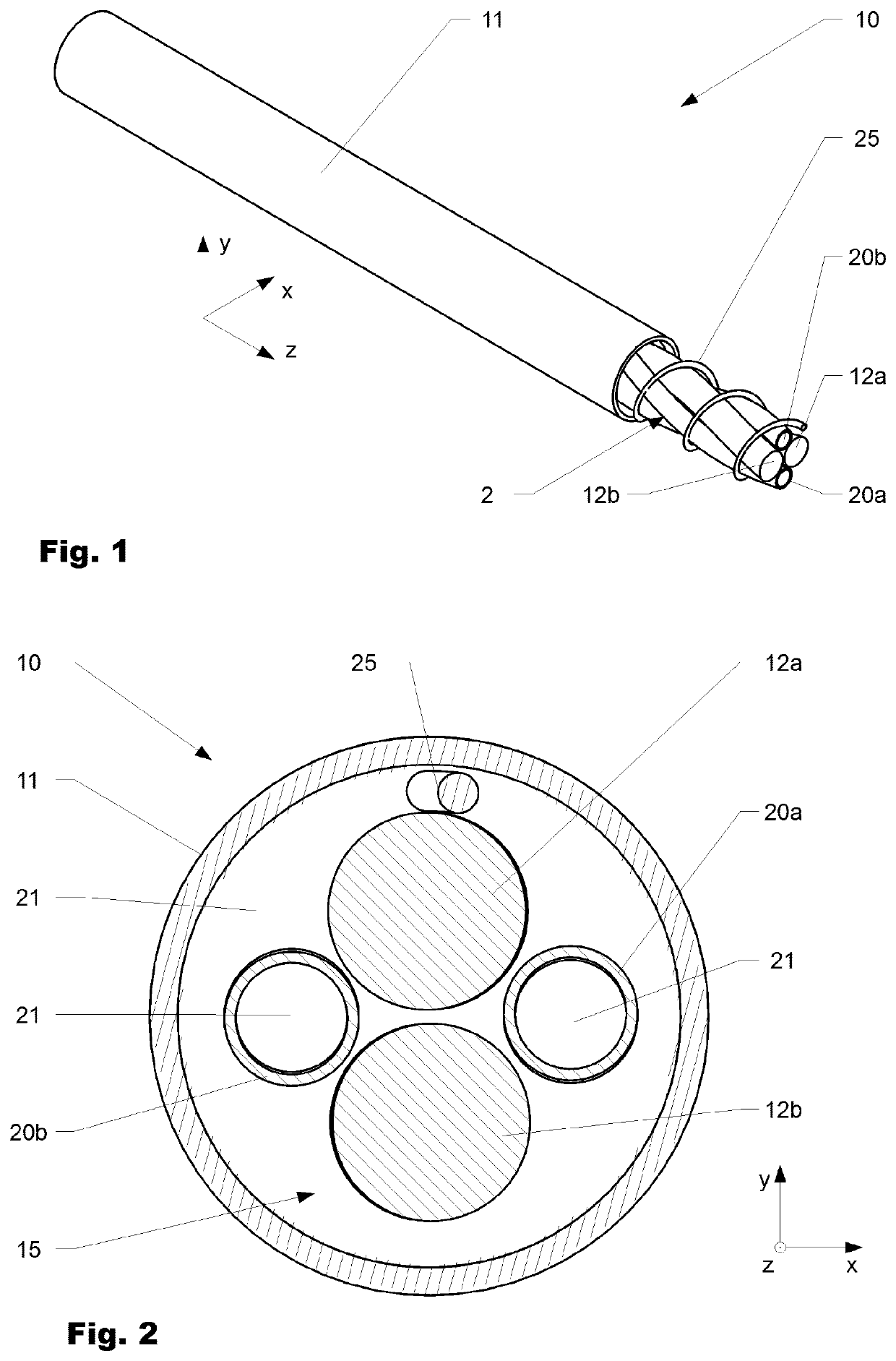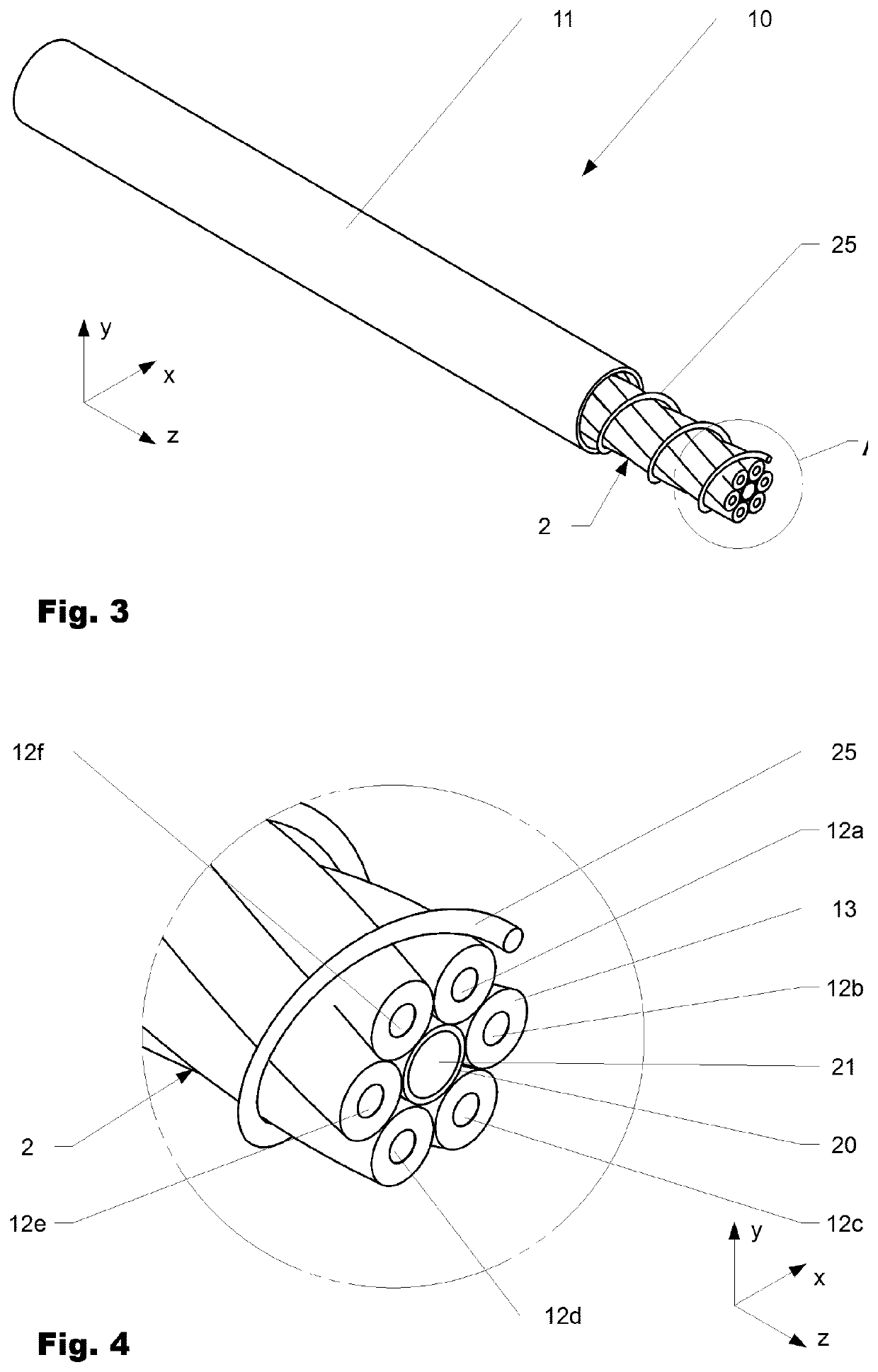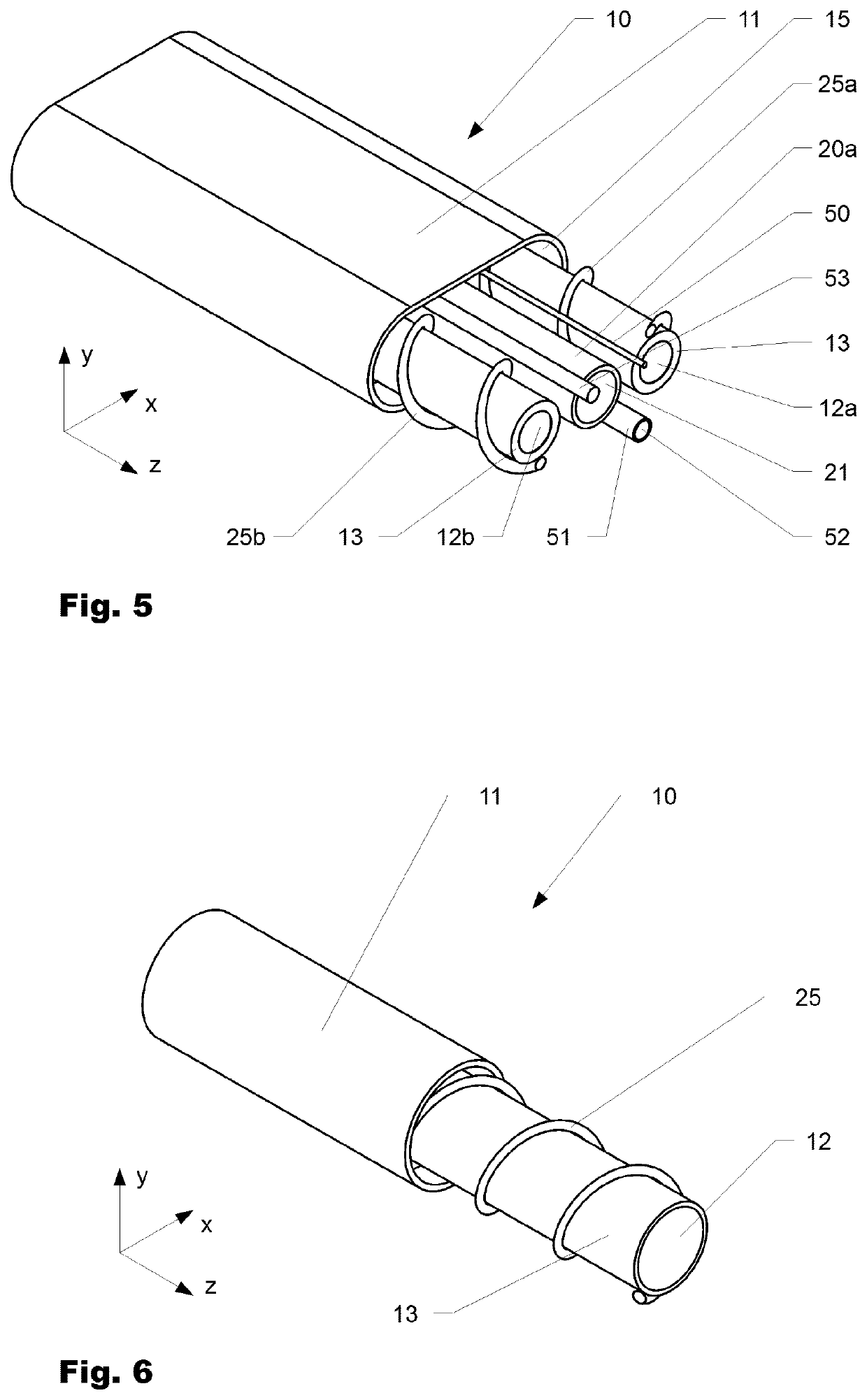Cable Assembly
a technology of cable and connector, which is applied in the direction of insulated conductors, cable connections, coupling devices, etc., can solve the problems of inability to guarantee direct contact, limited degree of heat exchange which can be obtained with such an arrangement, and inability to achieve direct contact, etc., to achieve the effect of reducing the damage of electric and/or fluidic contacts as well as the mechanical guard due to accidental drop of the connector, and achieving good results
- Summary
- Abstract
- Description
- Claims
- Application Information
AI Technical Summary
Benefits of technology
Problems solved by technology
Method used
Image
Examples
second embodiment
[0107]FIGS. 8a and 8b show a cable 10 that has a concentric structure. In the center of the cable 10 a stranded conductor 12 is arranged which comprises a first sheath 13 that provides electrical insulation as well as it is impermeable for cooling fluid. A first electrically insulating tube 26 which is impermeable for cooling fluid envelops the first sheath 13, spaced a distance apart from the first sheath 13. The first sheath 13 and the first electrically insulating tube 26 are interposed with first spacers 25 arranged around the center conductor 12 in order to define a first interstitial space 15a between the first sheath 13 and first electrically insulating tube 26 to convey a cooling fluid in a first direction along the cable. A concentric layer of multiple conductors 28a is arranged such that it envelops the first electrically insulating tube 26. A second electrically insulating tube 27 is be arranged such that it envelops the concentric layer of multiple conductors 28a. Second...
embodiment 1
[0109]FIG. 13 and FIG. 14 show a further embodiment of a cable assembly 1 according to the invention with a similar setup like the embodiment 1 shown in FIG. 11 and FIG. 12. Yet, the cable assembly 1 shown in FIG. 13 and FIG. 14 comprises only one cable 10 interconnected with a connector 30. In order to obtain temperature regulation of the cable assembly 1—respectively cooling of the conductors 12—, cooling fluid (indicated by the dashed arrow) provide by a tube (not shown) can enter a chamber 32 arranged within the connector 30 via a second port 34 and circulate around conductors 12a, 12b arranged inside of the cable hose 11 and extending through the chamber 32 to contact members 31 (only one contact member is visible). Thus, the portions of the conductors 12a, 12b arranged within the chamber 32 can be prevented from overheating. As well, the chamber 32 comprises a first port 33 that is interconnected with the cable hose 11 and through which the cooling fluid can leave the chamber ...
PUM
| Property | Measurement | Unit |
|---|---|---|
| distance | aaaaa | aaaaa |
| temperature | aaaaa | aaaaa |
| electrical currents | aaaaa | aaaaa |
Abstract
Description
Claims
Application Information
 Login to View More
Login to View More - R&D
- Intellectual Property
- Life Sciences
- Materials
- Tech Scout
- Unparalleled Data Quality
- Higher Quality Content
- 60% Fewer Hallucinations
Browse by: Latest US Patents, China's latest patents, Technical Efficacy Thesaurus, Application Domain, Technology Topic, Popular Technical Reports.
© 2025 PatSnap. All rights reserved.Legal|Privacy policy|Modern Slavery Act Transparency Statement|Sitemap|About US| Contact US: help@patsnap.com



